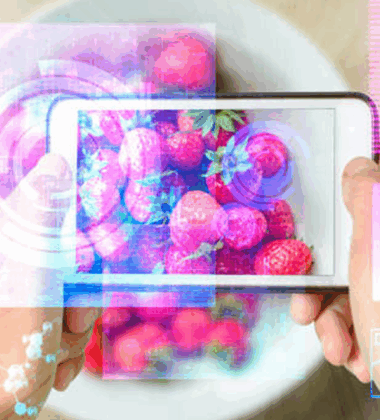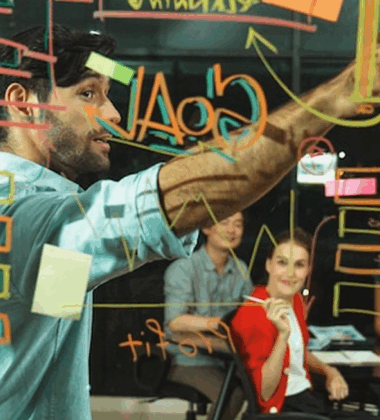In a world overflowing with content, grabbing attention is no longer enough—brands must create experiences that linger in memory and stir emotion. At the intersection of taste and sound, a powerful marketing approach is taking root: sensory marketing. Specifically, audio branding is emerging as a subtle yet influential tool in enhancing food experiences across industries.
With the Global Products Expo 2025 on the horizon—set for June 26–28 at the New Jersey Expo Center—F&B marketers and expo planners have a unique opportunity to craft multisensory brand narratives that go beyond traditional packaging and booth visuals. The key? Engaging the ears to influence how consumers perceive flavor, quality, and connection.
What Is Sensory Marketing?
Sensory marketing is the strategic use of stimuli—such as sound, scent, texture, or visuals—to create emotional connections with consumers. When used thoughtfully, these elements can trigger memory, evoke emotions, and influence buying behavior at a subconscious level.
While visual branding has long dominated, sensory marketing aims to engage all five senses, creating a richer and more memorable brand experience. In the context of the food and beverage expo USA, sensory strategies can turn a routine tasting into a full-bodied brand immersion.
Why Sound Matters in the Food Industry
We eat with more than just our mouths. Studies from Oxford University show that sound significantly influences our perception of flavor, freshness, and satisfaction. For example:
- Higher-pitched music enhances the perception of sweetness
- Crunching sounds increase the sense of freshness in snacks
- Ambient background music can affect how long visitors linger
In an expo environment, where visitors move quickly from booth to booth, sound offers an untapped way to anchor a brand in memory. And because most booths focus solely on visual appeal, integrating audio gives you a competitive edge.
Audio Branding in Action: Turning Taste into Story
Audio branding refers to the intentional use of sound—like jingles, sonic logos, background music, or ambient noise—to communicate a brand’s identity. It’s the aural equivalent of a color palette or logo design. Done right, it supports brand recall, emotional resonance, and customer loyalty.
At the food and beverage expo, examples of effective audio branding might include:
- A plant-based beverage booth playing upbeat, earthy soundscapes with natural elements like birds or flowing water
- A heritage spice brand using traditional instruments from its country of origin to set an authentic cultural tone
- A modern tech-enabled snack company featuring ambient electronic sounds to signal innovation and precision
Sensory Marketing Benefits for F&B Exhibitors
Implementing sensory marketing—especially audio branding—at the Global Products Expo 2025 can unlock real results for F&B brands:
1. Stronger Brand Recall
Sound bypasses rational processing and connects directly to memory. A distinct sonic element tied to your product can help attendees remember your booth days or weeks later.
2. Deeper Emotional Engagement
The right music or audio tone can make visitors feel relaxed, energized, nostalgic, or curious—all emotional triggers that influence buying decisions.
3. Multicultural Brand Storytelling
For brands with a global heritage or diverse ingredient roots, audio becomes a tool to share culture without translation barriers.
4. Improved Dwell Time
Booths with engaging sensory environments—including soothing or rhythmic audio—often see longer visitor interactions and more meaningful conversations.
Sound Strategy: How to Integrate Audio Branding at the Expo
Incorporating sound into your trade show strategy doesn’t have to mean loudspeakers or distracting music. Here’s how to get started with audio branding that enhances, rather than overwhelms:
1. Choose a Sonic Mood That Matches Your Product
Think about what emotion your brand wants to evoke. Comfort? Adventure? Energy? Match the tempo, instruments, and rhythm of your background audio to that feeling.
2. Keep It Subtle and Loop-Friendly
Avoid jarring sounds or complex lyrics. Ambient, instrumental loops that last 2–3 minutes can be played on repeat without becoming annoying.
3. Highlight Product Interactions
Match sound to action—like using a soft chime when someone tries a sample, or a crisp “crunch” audio effect when showcasing snacks.
4. Use Headphone Zones
For immersive experiences without overwhelming the booth space, use headphone stations with guided audio tours or sensory pairing experiences.
Real-World Examples of Sensory Marketing in Food Exhibits
- The Sonic Coffee Bar
A global coffee brand at a European expo recently introduced a sound-and-sip experience. Visitors selected their coffee blend and paired it with different audio tracks (classical, jazz, ambient) through headphones. Participants reported significant differences in flavor perception—and product sales rose 18% on the show floor. - Regional Spice Activation
A Middle Eastern spice company integrated traditional oud music and incense into their booth design. The booth became a viral highlight on social media, thanks to its transportive and immersive sensory experience. - Clean Label Snacks with Futuristic Beats
At an Asian innovation fair, a clean-label snack startup used digital touchpoints where visitors could remix a music track while sampling their product. It turned sampling into entertainment, attracting hundreds of young food tech fans.
How Expo Planners Can Elevate the Soundscape
While exhibitors can design their own audio experiences, expo planners also have an opportunity to shape the larger sonic environment. Here’s how:
- Curate zone-based music themes (e.g., innovation zone vs. heritage section) to set different moods throughout the expo
- Provide audio guidelines to maintain consistent noise levels and avoid overlap
- Host a “sound lounge” or “audio tasting room” to showcase brands that incorporate sonic branding
- Integrate QR codes that play branded stories or product journeys in multiple languages
These elements make the food and beverage expo USA more interactive, modern, and attendee-focused—qualities that drive return visits and industry buzz.
A Future Where Food Sounds As Good As It Tastes
As consumer expectations evolve, so must our approach to storytelling. The future of food and beverage marketing isn’t just about flavor—it’s about feeling. By tapping into sensory marketing and audio branding, brands at the Global Products Expo 2025 can create emotional depth, cultural richness, and lasting impact.
This isn’t about making noise. It’s about making meaning—one note, one taste, and one moment at a time.





